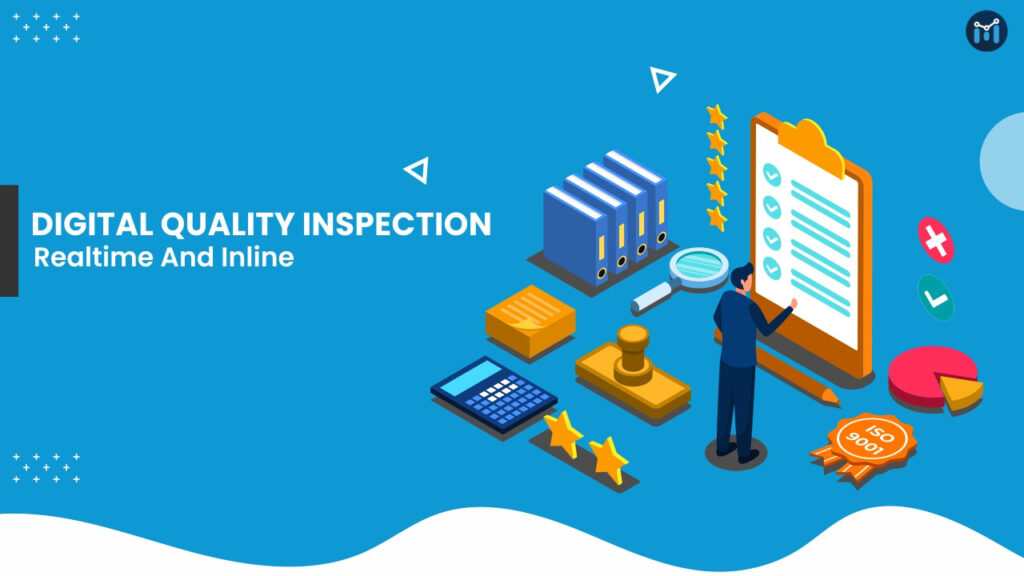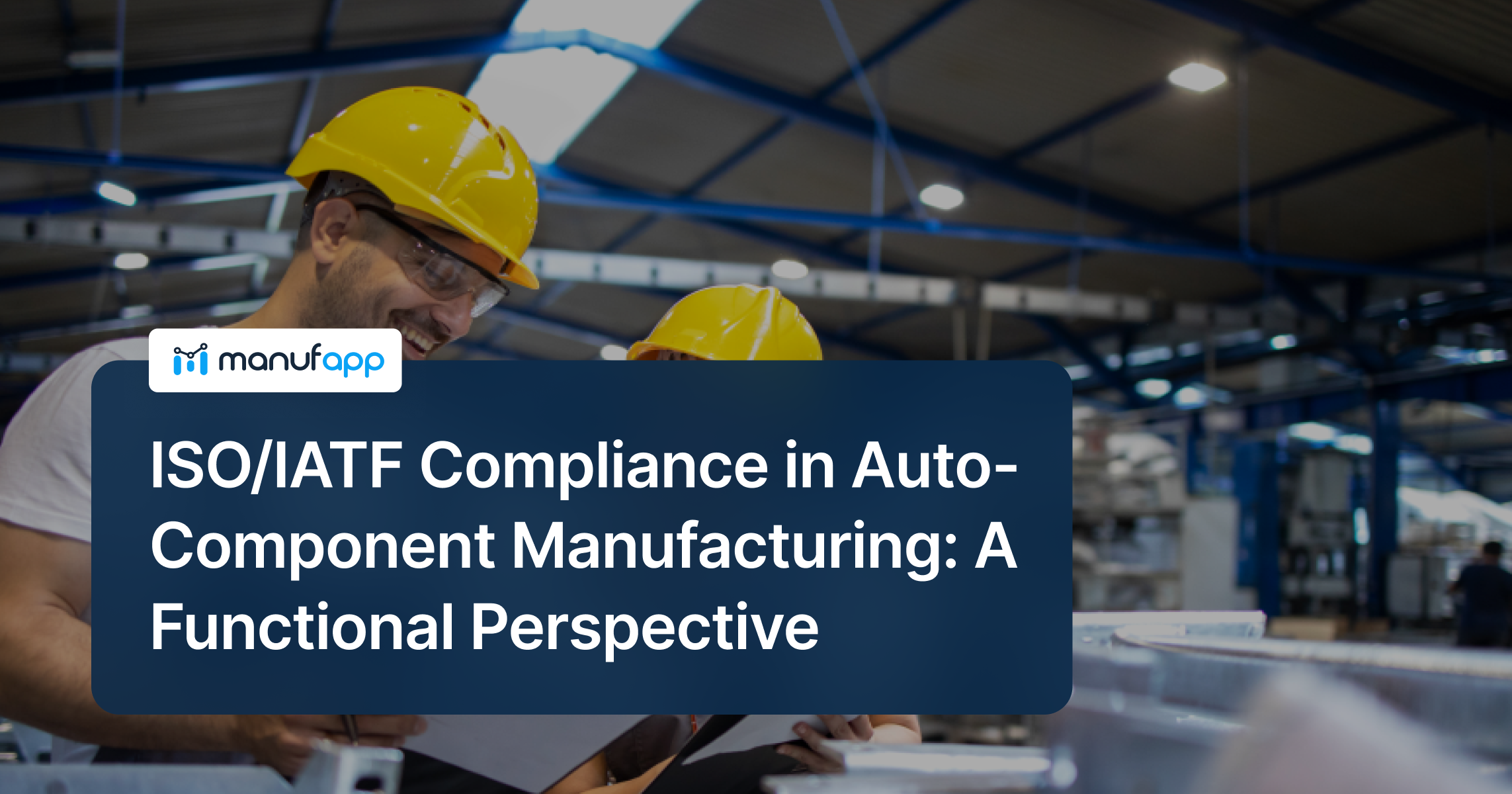Manual visual inspection in the manufacturing industry has been there for ages as trusted means to ensure that products meet pre-specified standards. Almost every standard factory either has its dedicated product quality control team or has a third-party inspection service provider for manual visual inspection.
On the other hand, in recent times, digital quality inspection has emerged as a new solution to automate the process, reducing time and ensuring better inspection.Now the question is, can it replace manual visual inspection? Probably yes! Digital quality inspection has a huge potential to become an integral part of the inspection process in near future. Keep reading to learn ‘how’?
Limitations of Manual Visual Inspection
Manual inspection for inline quality checks is done by a trained inspector or a team of experts, who assess the entity and present their report according to their learning in the training or previous knowledge. The process doesn’t involve any equipment except their sightings.
While several factories rely on this method for their product quality, there are primarily two types of errors that are common and inevitable:
- Missing an existing defect, which is frequent in this process.
- Incorrect identification of a defect that doesn’t exist is also called false positive that may cause unnecessary production costs and overall wastage.
- Inconsistent visual quality detection may occur because of two different individuals.
The reasons behind the above two forms of errors are as follows:
- Optical illusions: Human eyes are often fooled by certain types of images. In the case of manufactured products, the error can lead to product recall and cost a lot.
- The incapability of making precise measurements: On a very tiny scale, human eyes are unable to measure two similar objects and determine the difference in their sizes. The concept is applicable to any other factor that needs measurement, including surface roughness and edges precision.
- Unequal visual perception: The visual quality defect depends on an individual perception. It means, two different individuals may have different perceptions for quality of the same product. It would result into an inconsistent quality level for similar defects or Ok items.
Other than that, one cannot deny the fact that manual inspection is a costly venture. Hence, it is unwise to entirely depend on manual inspection to ensure optimum quality.
 Why will Digital Quality Inspection become a new age alternative?
Why will Digital Quality Inspection become a new age alternative?
Digital Quality Inspection systems are generally built on library of images which are either rejected or accepted by humans. Thus, they are modeled/impersonating on human behavior/reaction. The digital quality inspection also called automated visual inspection has the ability to overcome the above-sighted issues. It eliminates the dependency on human intervention in the entire procedure of visual inspection by automating the entire process. It also has the ability to eliminate potential biases in quality detection that arise when two different individuals are visually inspecting. It uses physical equipment coupled with intelligent quality assurance software to make the testing more detailed, accurate, and faster, hence surpassing the standard of manual inspection. Let us see how it works.
More on it, our blog on Rise of Smart Factory in today’s Digital World will guide you towards more importance of Smart Factories. Please have a look.
How Digital Quality Inspection works?
Essentially, this solution works through IoT-connected manufacturing software. It largely relies on a rich library of images to determine the acceptance or rejection of the products. The solution uses sensors and devices that are installed at different locations in the factory to correct the issues with inline quality assurance. It includes cameras, scales, and temperature, vibration, and humidity sensors to make the quality check process error-free. The connected software with ML programming effortlessly processes the images, videos, sound, and temperature streamed from the camera and sensors in real-time to convert them into a large amount of data. Since the connected devices are IoT-enabled, supervisors are able to collect real-time data from the cloud to perform the inline scanning and dimensional measurements. They receive actionable insight into the actual cause behind the quality issues and can catch future defects as well in the machine.
What are the benefits of Digital Quality Inspection?
There are a number of reasons to choose it when it comes to manufacturing. Here are a few listed below:
- Smart systems perform thorough quality checks down to the finest details.
- Requires minimal physical equipment to automate the visual inspection process.
- The technology and equipment used for image acquisition offer a very high optical resolution to observe the deficit in quality.
- Enables supervisors to make observations and conclusions extremely fast, as the system has the ability to increase processing speeds and possesses a potentially infinite memory capacity.
- This system eradicates any potential biases in quality detection arising from different or same individual quality inspector’s end.
- The system is programmable as required and follows instructions as defined.
- The automated system measures entire dimensions impeccably in a standardized manner.
- The system can be easily deployed in environments with dangerous and hazardous conditions where involving humans may prove to be fatal.
- Digital Visual Inspection can also be integrated to in-line continuous production instead of only during final inspection of finished products. It will benefit in terms of earlier detection and correction of defects.
- The improved quality of captured images and processing technologies can detect those defects that greatly impact the product reliability, but are not identified by naked human eye.
Besides, the costs of technology used in digital quality inspection is continually going down, while the efficiency is climbing. As a result, it costs far less than manual inspection. Therefore, if you are planning to lift the precision value of quality check in your factory at a lower cost, it is the right time.
Please also have a look into our blog on Make Manufacturing More Intelligent and Smart with IoT for more relevant information on the same topics discussed.
Summary
Manual visual inspection is a common practice in the manufacturing industry. But IoT power digital inspection is a more effective and flexible solution for inline quality assurance. In order to prevent defects from reoccurring, your inline quality assurance system must be able to adapt to new arising problems. Also, it should be able to keep up with changing industry standards to maintain product quality and best practices. Quickly adapting your quality assurance processes is also essential to conform to new regulations. Hence, it becomes important for you to opt for a flexible, latest, and reliable digital quality inspection system. A well-designed and perfectly installed system can significantly save your time, cost of production, and maintain better product quality.


 Why will Digital Quality Inspection become a new age alternative?
Why will Digital Quality Inspection become a new age alternative?


